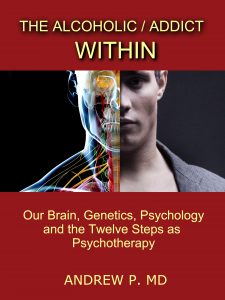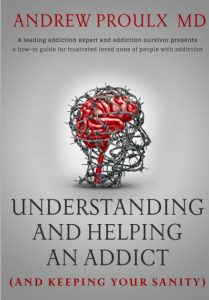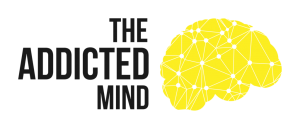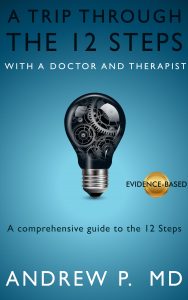Sign up as a user (no pun intended) and receive emails with new articles (Click Here).
There are a lot of reasons that we need to be aware of the potential for children and adolescents to start using drugs or alcohol. For one, they are incredibly vulnerable - mentally, socially, physically, emotionally. They are so vulnerable as to be gullible. They have not yet developed their full ability to consider the long-term consequences of their actions (nor have many adults!), they are extremely susceptible to peer-pressure and bullying... they want to fit in with the crowd, no matter what that entails. However, there are other reasons , too.
The brain continues to develop until about age 25. Exposing the developing brain to addictive substances or behaviors can result in addiction pathways being formed that become a more permanent part of the brain structure (see "The Brain in Addiction / Alcoholism Click Here). This can make the addiction more difficult to treat and more likely to re-assert itself throughout life.
Watch out for accidental exposure of drugs to kids, including prescription drugs!
As well, when young people get caught up in substance addiction they often lose out on the "normal" life processes, and these can have long-lasting consequences. When people spend their adolescence and early adult years struggling with substance use, they might not finish high-school, get further education, or enter the workforce to their capacity. These deficiencies may be a serious impediment to achieving success in life even after the addiction has been overcome.
For example, I have a friend who started drinking in his early teens, and ended up being a low-functioning alcoholic until he finally got sober at age 55. Because of this, he never finished high-school, never got a trade, never built up any serious work experience, never advanced within any organization or company, and never built up any savings or pension. Once he was sober at age 55, he was starting out from scratch, as if he was an 18 year-old with no high-school diploma. He's a very bright and capable guy, but he's now in his 60s and has to work low-income manual labor jobs that are far more physically taxing than his age will allow for very long. That's an extreme example, but the same can happen to someone even if they sober up when they are in their 20s or 30s.
Let's look at some of the factors at work in bringing children and adolescents into addiction and what can be done about it.
XXXXXXXXXXXXXXXXXXXXXXXXXXXXXXXXXXXXXXXXXXXXXXXXXXXXXXXXXXXXXXXXXXXXXXXXXXXXXXXXXXXXXXXXXXXXXXXXXXXXXXXXXXXXXXXXXXXXXXXXXXXXXXXXXXXXXXXXXXXXXXXXXXXX
 Want to get the whole story?
Want to get the whole story?
See the author's book, for a guided tour through the brain changes, genetics, and psychology that cause addiction... and how to use this information to beat addiction.
This successful book enables addicts and alcoholics to understand why addictive substances hold such power over them, and it allows non-addicts to understand addiction and all the behaviors that go along with it. Loved ones, teachers, clergy, supervisors, healthcare professionals... anyone who encounters addiction will find this book an eye-opener.
The book is presented in everyday language with a sense of humor that makes it a fun read.
This important book is available in e-book and paperback versions, and for download of free samples at amazon.com Click Here
XXXXXXXXXXXXXXXXXXXXXXXXXXXXXXXXXXXXXXXXXXXXXXXXXXXXXXXXXXXXXXXXXXXXXXXXXXXXXXXXXXXXXXXXXXXXXXXXXXXXXXXXXXXXXXXXXXXXXXXXXXXXXXXXXXXXXXXXXXXXXXXXXXXX
The "Alcoholism/Addiction Gene"
It has been widely reported in the popular media since the 1990s that there is an "alcoholism/addiction gene." However, the information has been reported in the popular way out of context and has frightened many people unnecessarily. This causes the problem that many people who have a family history of substance addiction may believe that they are destined for addiction, and it can become a self-fulfilling prophecy.When you understand the genetics of substance addiction you can see that it is not necessarily something that will be passed on to your children. To learn more about the specifics see "Is There an Alcoholism / Addiction Gene?" Click Here.
There are many "environmental factors" that can cause addiction regardless of a person's genetics. These include: exposure to substances as a fetus, growing up in an unstable home, exposure to abuse, poor education, poor nutrition, and the neighborhood environment that a person grows up in.
Many people with a strong family history of addictions and a high-risk upbringing never develop addiction problems, while many people with no family history of addiction and a loving, nurturing upbringing do develop addictions.
The bottom line is this: genetics is not necessarily our destiny when it comes to substance addiction. My advice? If there is a family history, it is best to educate yourself so that you can watch for early signs of substance use in your children. And make sure you talk to your kids about addiction. Make your kids know that they can come to you without you "freaking out" when they have a problem, no matter how serious the problem. Also, educate yourself about mental health problems, especially the ones that tend to affect young people. Many young people start out using substances to "self-medicate" their mental health symptoms.
What Research Tells us about Substance Use in Young People
The best data we have for substance use prevention in children and adolescents comes from the 2013 National Survey on Drug Use and Health carried out by the U.S. Department of Health and Human Services Substance Abuse and Mental Health Services Administration (SAMHSA). The data from this section is taken from that important study. The reference appears at the end of this article.
Research has shown that substance use by adolescents can often be prevented by addressing some of the factors associated with the onset or escalation of substance use. The National Survey on Drug Use and Health identified these factors, each of which is discussed below. These factors are printed in bold letters.
One factor that can influence whether youths will use tobacco, alcohol, or illicit drugs is the extent to which they believe these substances might cause them harm. Trends in substance use often coincide with trends in perceived risk. Increases in perceived risk typically precede or occur simultaneously with decreases in use, and vice versa.
Perceived Availability. Youths aged 12 to 17 who perceived that it was easy to obtain specific illicit drugs were more likely to be past month users of those illicit drugs than were youths who perceived that obtaining specific illicit drugs would be fairly difficult, very difficult, or probably impossible.

Perceived Parental Disapproval of Substance Use. Youths aged 12 to 17 who believed their parents would strongly disapprove of them using specific substances were less likely to use these substances than were youths who believed their parents would somewhat disapprove or neither approve nor disapprove.
Attitudes toward Peer Substance Use. A majority of youths aged 12 to 17 reported that they disapproved of their peers using substances. In 2013, youths aged 12 to 17 who strongly or somewhat disapproved of their peers using marijuana once a month or more were less likely to be past month marijuana users than those who neither approved nor disapproved of this behavior from their peers (2.0 vs. 26.2 percent).
Fighting and Delinquent Behavior. Youths aged 12 to 17 who had engaged in fighting or other delinquent behaviors were more likely than other youths to have used illicit drugs in the past month. In 2013, past month illicit drug use was reported by 17.0 percent of youths who had gotten into a serious fight at school or work in the past year compared with 7.1 percent of those who had not engaged in fighting at school or work. An estimated 34.6 percent of youths who had stolen or tried to steal something worth over $50 in the past year used illicit drugs in the past month compared with 8.0 percent of those who had not attempted or had engaged in such theft.
Religious Involvement and Beliefs. The rates of past month use of illicit drugs and cigarettes and binge alcohol use were lower among youths aged 12 to 17 who agreed with statements about the importance of religious beliefs than among those who disagreed.
Exposure to Substance Use Prevention Messages and Programs. In 2013, 72.6 percent of youths aged 12 to 17 reported having seen or heard drug or alcohol prevention messages in the past year from sources outside of school, such as from posters or pamphlets, on the radio, or on television. In 2013, the prevalence of past month use of illicit drugs among those who reported having such exposure (8.4 percent) was lower than the prevalence among those who reported having no such exposure (10.0 percent). In 2013, 73.5 percent of youths aged 12 to 17 who were enrolled in school in the past year reported having seen or heard drug or alcohol prevention messages at school. In 2013, the prevalence of past month use of illicit drugs was lower among those who reported having such exposure in school (8.4 percent) than among youths who were enrolled in school but reported having no such exposure (10.2 percent).
Parental Involvement. In 2013, past month use of illicit drugs and cigarettes and binge alcohol use were lower among youths aged 12 to 17 who reported that their parents always or sometimes engaged in supportive or monitoring behaviors than among youths whose parents seldom or never engaged in such behaviors. The monitoring/supportive behaviors looked at were: checking that homework was done, helping with homework, limiting TV time, limiting the amount of time spent out with friends on school nights, praising good work, giving chores around the house, and showing pride in the child.
Clinical experience with child and adolescent substance use
I have worked with hundreds of young people with addiction issues, or adults whose addiction started in childhood or adolesence. My own observations among these people have shown some commonalities. Of course, there are the usual risk factors of family history (genetics), and environmental factors. However, I have heard time and again from these people two other reasons that they started using substances regularly in childhood and adolesence.Social awkwardness/shyness. I have heard many people say that they started drinking or using drugs at a young age because it made them comfortable in a social setting. Typically, they say they were uncomfortable and awkward in a group, found it very difficult to talk to the opposite sex, and were "wall-flowers" at social gatherings. They found that alcohol or drugs made them overcome their social anxieties and awkwardness and feel more confident, and they began using the drugs or alcohol more and more often because they liked their social abilities when drunk or high. Of course, many of these people then developed serious substance use problems that destroyed much of their lives, including any semblance of social graces.
Self-medicating mental health symptoms. There is a very close link between addictions and other mental health illnesses. They both share many of the same genetics, causes, risk factors, and symptoms (see "The Link Between mental Health and Addiction/Alcoholism" Click Here). Data from the U.S. National Institute of Health tells us that more than half of people with addictions also suffer from mental health issues. Two mental health issues that are seen commonly among adolescents are depression and anxiety. It has been my clinical experience that many young people will not recognize their symptoms as treatable mental health issues, and will just assume that it's "normal" for them. Drugs and/or alcohol become a way to blot out these symptoms - for a while - and many end up having their mental health problems greatly magnified by addiction.
How to prevent addiction in young people
Based on the research we have just discussed, as well as my own observations, we can see some ways to help prevent substance use and addiction in children and adolescents. If there is a family history or other risk factors for addiction we can educate ourselves about the signs and symptoms of addiction so that we can watch for them in our kids. As well, we can educate ourselves and our kids about the reality of drug and alcohol use and its consequences. To do this in a way that the kids won't see as boring, I recommend some documentaries, such as "Drugs, Inc" and "Dope" on Netflix. These shows are really interesting to watch and show the reality of substance use.As well, learning about mental health disorders that are common in kids - especially depression and anxiety - and watching for these in our kids is a great idea. Better to deal with these easily treatable problems properly rather than have the child look for relief from a drug dealer.
Looking at lessons we can learn from the research we discussed above, we can address each of the points by ensuring kids are receiving drug and alcohol education at school, involving ourselves in their lives and schoolwork, and showing disapproval toward drug use.
Above all, letting our kids know that they can approach us about ANY problem - no matter how bad - is key. If we stay calm and open-minded and take an approach toward helping to deal with the problem rather than punishing, we will likely be able to intervene in the early stages of problems that could lead to addiction.
Reference:
U.S. DEPARTMENT OF HEALTH AND HUMAN SERVICES Substance Abuse and Mental Health Services Administration Center for Behavioral Health Statistics and Quality. (September 2014). Results from the 2013 National Survey on Drug Use and Health: Summary of National Findings. Retrieved from https://www.samhsa.gov/data/sites/default/files/NSDUHresultsPDFWHTML2013/Web/NSDUHresults2013.pdf





4 comments
sboMarch 10, 2022 at 7:22 am
142956 956976You should participate in a contest for among the top blogs on the internet. I will suggest this web site! 426444
HairstylesApril 9, 2022 at 2:01 am
Thanks a lot for providing individuals with a very nice chance to read in detail from this site. It is always so superb and packed with a good time for me and my office fellow workers to search the blog at the least three times every week to see the fresh tips you have. Of course, I’m also at all times pleased for the stunning concepts you give. Some two facts on this page are in reality the most efficient I’ve had.
Chaturbate CategorÃAsApril 12, 2022 at 12:48 pm
185218 994794Hello! I could have sworn Ive been to this weblog before but after browsing by way of some of the post I realized its new to me. Anyways, Im definitely happy I identified it and Ill be book-marking and checking back often! 689213
good cc shop dumpsApril 21, 2022 at 10:25 am
60060 215078I like this web weblog very significantly so significantly superb information . 894681